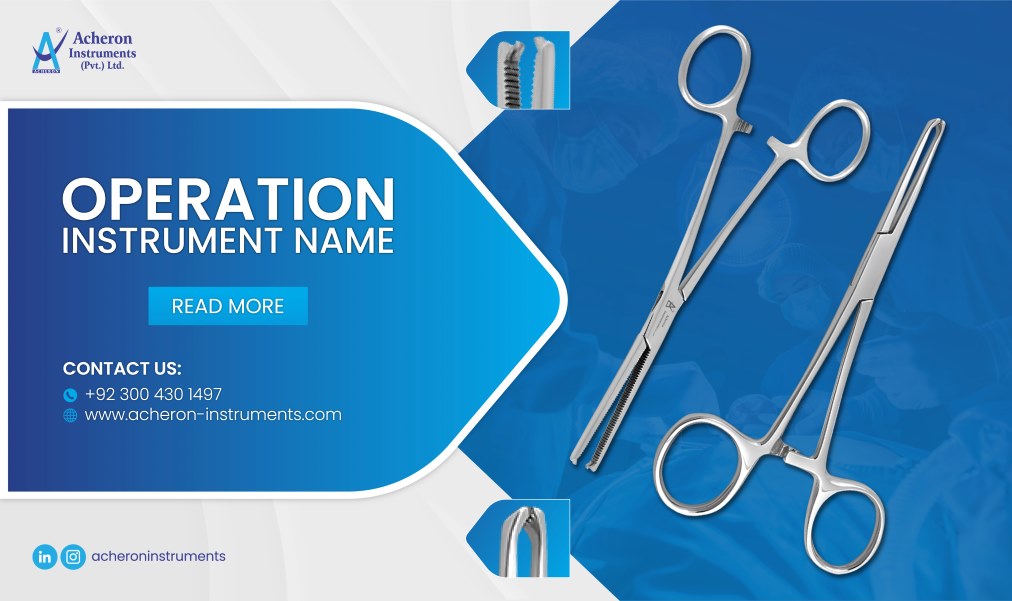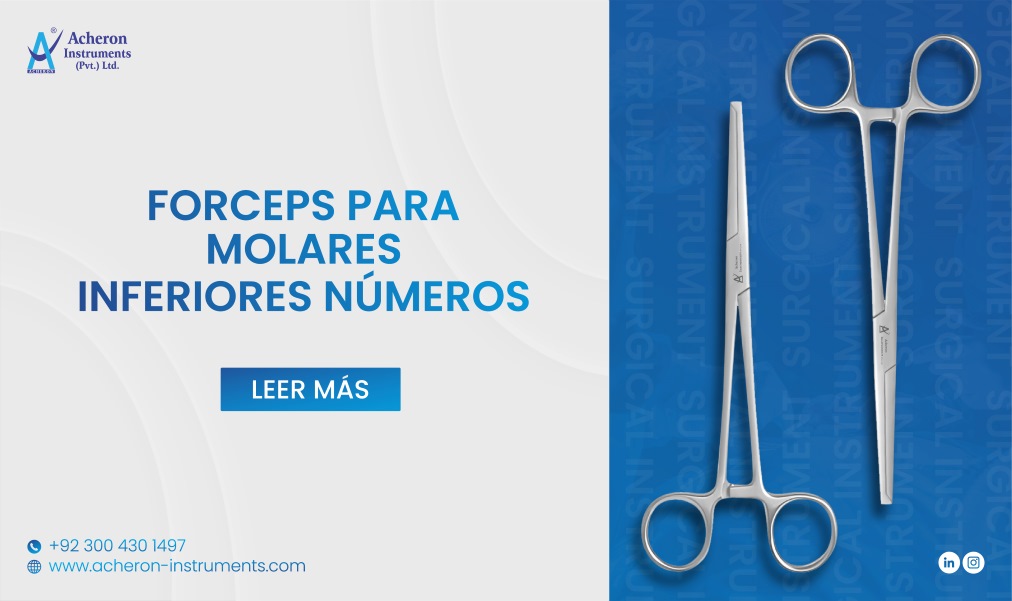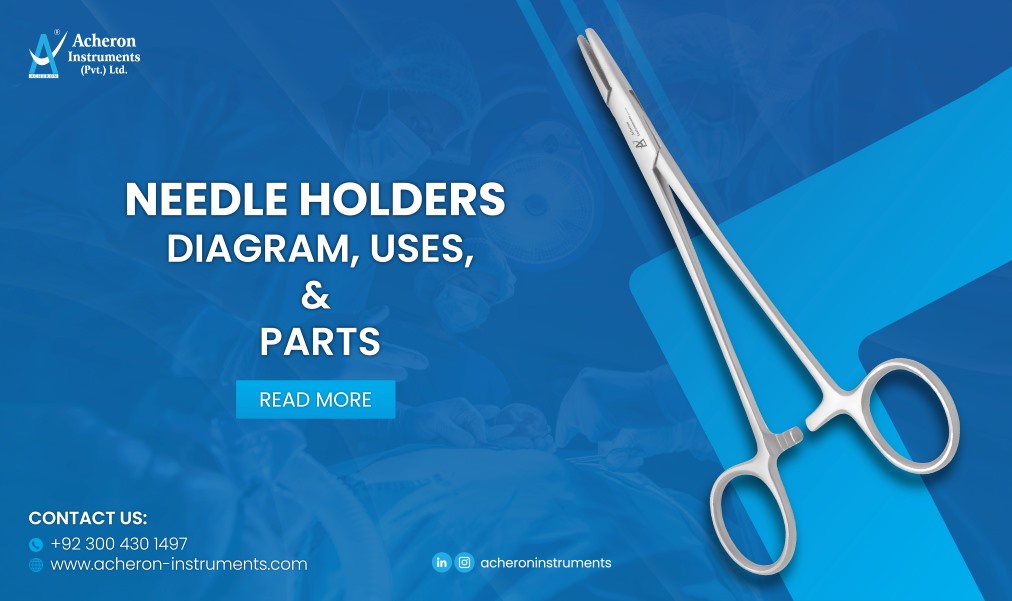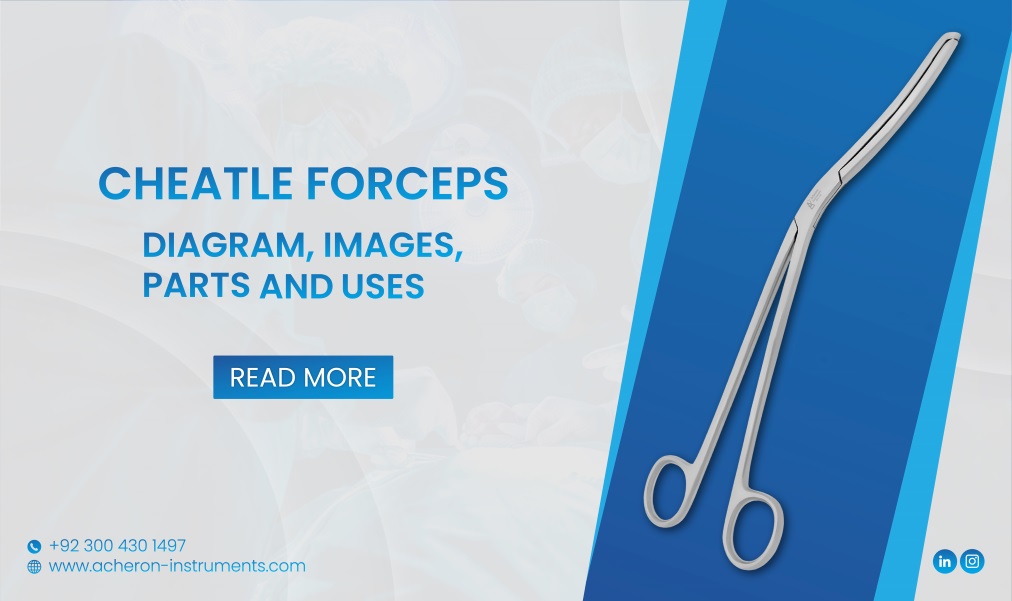Normal Delivery Instruments
Normal Delivery, also known as vaginal delivery is the natural process of bringing a new life into the world without medical intervention. Sometimes, this beautiful miracle can also bring challenges, posing risks to both the mother and the baby. In such situations, specialized surgical tools known as normal delivery instruments or obstetrical instruments are used to assist vaginal delivery. These instruments are designed to minimize trauma for both the mother and the baby during childbirth, ensuring their safety.
Primary Function and Significance
Normal Delivery instruments are specialized for vaginal or normal delivery. Their primary function is to help normal delivery when natural methods become unsafe or insufficient. Vacuum extractors and forceps. Medical intervention becomes necessary in case of prolonged labor, fetal distress, or maternal exhaustion. For this purpose, forceps and vacuum extractors are employed to facilitate the delivery process minimizing risk of injuries and complications.
Normal Delivery Instrument Names and Images
Let’s discover our essential normal delivery tray tools ranging from forceps to episiotomy scissors to facilitate natural childbirth. These instruments enable obstetricians and midwives to guide babies through the birthing process safely. Want to learn more? Explore our collection to learn more about the role of normal delivery instruments in smooth and safe normal delivery.
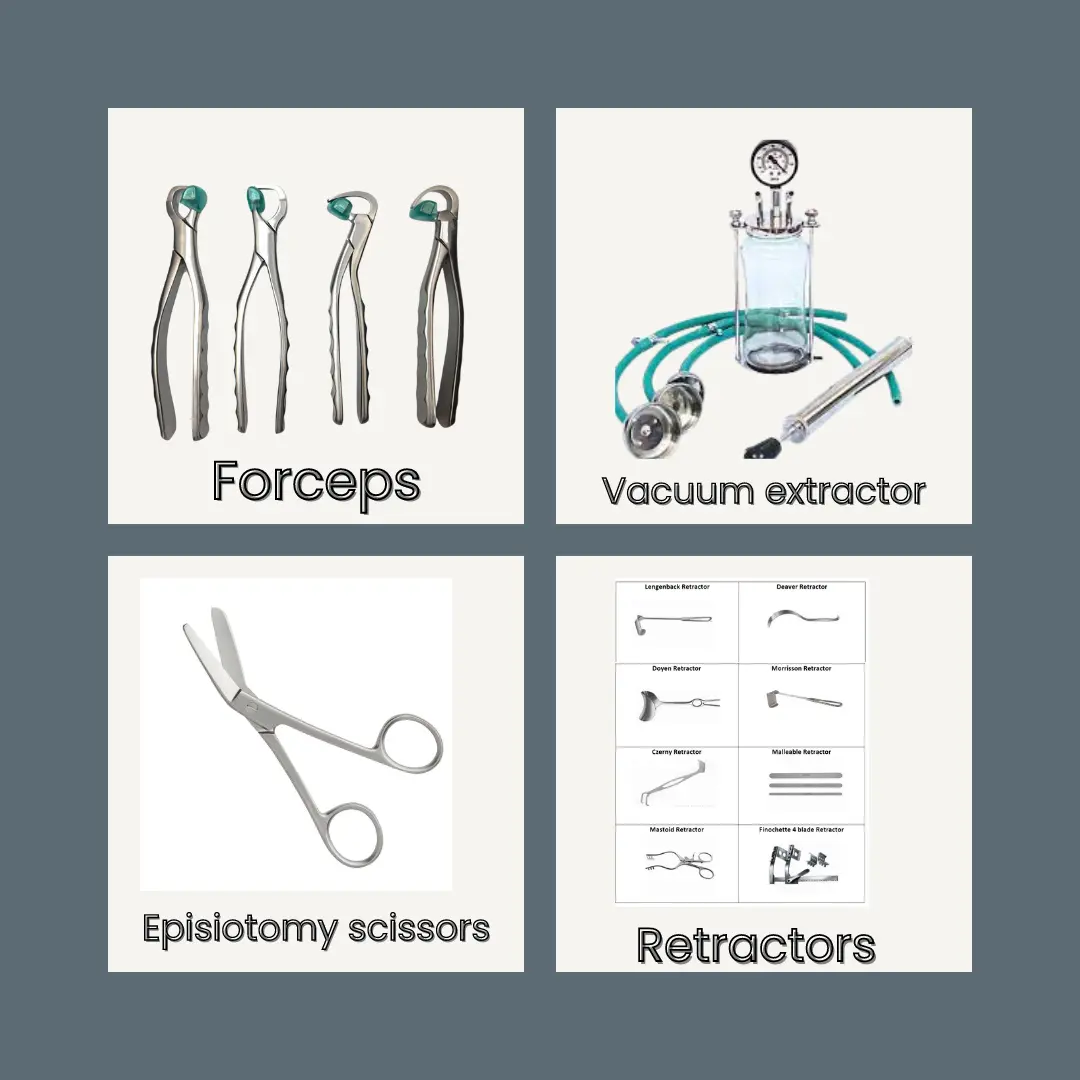
Normal delivery tray instruments list
Following are normal delivery tray instruments list and benefits that can be used in surgeries
|
Instrument |
Features |
|
The curved, tong-like instrument is used to grasp and guide the baby's head during delivery. Provides traction to assist in the extraction process. Can be straight or curved. |
|
|
Vacuum Extractor |
A device that applies suction to the baby's head, assisting in delivery. Consists of a vacuum cup attached to a vacuum pump and a handle for traction. |
|
Episiotomy Scissors |
Surgical scissors are used to make a controlled incision in the perineum (the area between the vagina and anus) to widen the vaginal opening during childbirth. |
|
Fetal Scalp Electrode |
The electrode attached to the baby's scalp to monitor fetal heart rate during labor. Provides continuous and accurate fetal heart rate monitoring. |
|
Fetal Stethoscope (Pinard Horn) |
Acoustic instruments are used to listen to the baby's heartbeat during labor. Provides non-invasive fetal heart rate monitoring. |
|
Amniotomy Hook |
The hook-shaped instrument is used to rupture the amniotic sac (bag of water) during labor. Facilitates the release of amniotic fluid to accelerate labor. |
|
Dilators (Hegar's Dilators) |
Smooth, tapered instruments are used to dilate the cervix during labor. Graduated in size to gradually widen the cervical opening. |
|
Umbilical Cord Clamp |
A device used to clamp the umbilical cord immediately after birth to prevent bleeding and ensure a clean cut. |
|
Cord Scissors |
Surgical scissors are used to cut the umbilical cord after clamping. Features rounded tips to prevent accidental injury to the newborn. |
|
Surgical instruments are used to hold back tissue or organs during surgical procedures. In obstetrics, may be used to provide better visibility during episiotomy or perineal repair. |
Normal delivery instruments set
Below is a list of common normal delivery instruments along with their descriptions and benefits:
|
Instrument |
Description |
Features |
|
Forceps |
Large, curved tongs used to grasp and guide the baby's head during delivery |
Smooth, curved blades to minimize trauma to the baby's head - Locking mechanism for secure grip - Handle for easy manipulation by the obstetrician |
|
Vacuum Extractor |
Device that uses suction to assist in the delivery of the baby's head |
Soft cup for gentle suction - Vacuum pump for controlled suction pressure - Handle for traction during delivery |
|
Surgical scissors used to make a controlled incision in the perineum (area between the vagina and anus) to widen the birth canal |
Sharp, curved blades for precise cutting - Safety feature to prevent accidental injury - Handle for ease of use |
|
|
Fetal Scalp Electrode |
Electrode attached to the baby's scalp to monitor fetal heart rate during labor |
Thin, flexible wire for attachment to the baby's scalp - Connector for connection to fetal monitor - Insulated coating to prevent electrical shock |
|
Fetal Stethoscope (Pinard Horn) |
Acoustic device used to listen to the baby's heart rate during labor |
Bell-shaped end for placing on the mother's abdomen - Hollow tube for sound transmission - Earpieces for listening by the obstetrician or midwife |
|
Amniotomy Hook |
Surgical hook is used to rupture the amniotic sac (bag of waters) to induce or augment labor |
Sharp, pointed tip for piercing the amniotic membrane - Handle for easy grip and manipulation Sterile packaging for infection control |
|
Dilators (Hegar's Dilators) |
Surgical instruments used to dilate the cervix during labor or medical procedures |
Smooth, tapered design for gradual cervical dilation - Various sizes to accommodate different cervical diameters - Made of medical-grade stainless steel for durability |
|
Umbilical Cord Clamp |
Plastic or metal clamp used to clamp the umbilical cord after birth |
The spring-loaded mechanism for secure closure - Smooth edges to prevent injury to the umbilical cord - Sterile packaging for infection prevention |
|
Cord Scissors |
Surgical scissors used to cut the umbilical cord after clamping |
Sharp, straight blades for clean cutting - Rounded tips to prevent accidental injury - Handle for ease of use and grip |
|
Retractors |
Surgical instruments used to hold back tissues or organs during surgery or childbirth |
Blunt or pointed ends for tissue manipulation - Ratcheting mechanism for adjustable tension - Various sizes and shapes for different applications |
Conclusion
In conclusion, normal delivery instruments are indispensable tools in obstetrics, ensuring the safe and successful delivery of newborns during childbirth. From forceps and vacuum extractors to episiotomy scissors and fetal scalp electrodes, each instrument serves a specific purpose in assisting obstetricians and midwives in facilitating vaginal deliveries. By understanding the types, functions, and benefits of these instruments, we gain a deeper appreciation for their crucial role in the miracle of childbirth and the provision of quality maternal and neonatal care.


